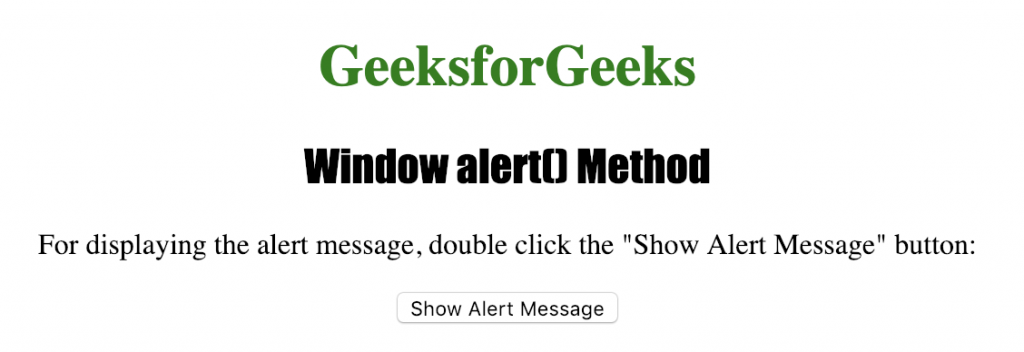El método Window alert() se utiliza para mostrar un cuadro de alerta. Muestra un mensaje específico junto con un botón Aceptar y generalmente se usa para asegurarse de que la información llegue a través del usuario.
Devuelve una string que representa el texto que se mostrará en el cuadro de alerta.
Sintaxis:
alert(message)
El siguiente programa ilustra el método Window alert() :
Visualización de un cuadro de alerta.
<!DOCTYPE html>
<html>
<head>
<title>
Window alert() Method in HTML
</title>
<style>
h1 {
color: green;
}
h2 {
font-family: Impact;
}
body {
text-align: center;
}
</style>
</head>
<body>
<h1>GeeksforGeeks</h1>
<h2>Window alert() Method</h2>
<p>
For displaying the alert message, double
click the "Show Alert Message" button:
</p>
<button ondblclick="myalert()">
Show Alert Message
</button>
<script>
function myalert() {
alert("Welcome to GeeksforGeeks.\n " +
"It is the best portal for computer" +
"science enthusiasts!");
}
</script>
</body>
</html>
Producción:
Después de hacer clic en el botón
Navegadores compatibles: los navegadores compatibles con el método de alerta de ventana ( ) se enumeran a continuación:
- Google Chrome
- explorador de Internet
- Firefox
- Ópera
- Safari
Publicación traducida automáticamente
Artículo escrito por Shubrodeep Banerjee y traducido por Barcelona Geeks. The original can be accessed here. Licence: CCBY-SA